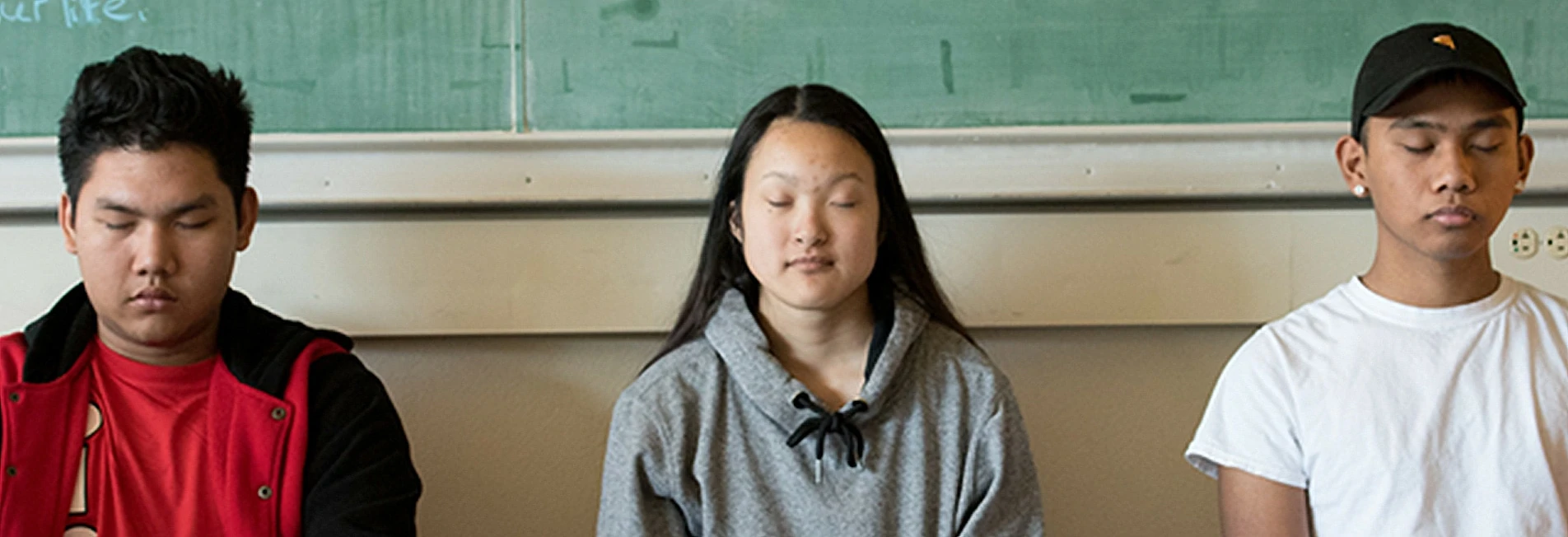Some face issues of poverty and trauma. Some are witness to parental stress that can leave them feeling alone and helpless.
Social media, as research has demonstrated, also takes its toll, with its constant demand for attention and a kind of amped up peer pressure that easily degenerates into plain cyberbullying.
Other media often leans toward depictions of aggression and violence.
The result is through-the-roof chronic stress and anxiety at far higher rates than in previous generations.
The Impact of Stress on Learning
Managing this is more than a matter of just developing “grit” or even resilience. Chronic stress is a physical experience. The body gets used to being in a constant state of red alert. The thinking part of the brain – the prefrontal cortex – is “turned off” by the stress response so the body can act quickly in order to “survive.”
This is great when the threat is physical; not so much when it’s emotional or mental. The response interferes with learning readiness. Some studies show a 13% drop in intelligence tests when stress gets in the way.
And, of course, it’s not just kids who are stressed. A great many of us deal with chronic stress a good deal of the time. Teachers, counselors, health professionals, and others in the helping professions know all about this – from time constraints to increasing mandates to the challenges that individual children can present to us even as we’re having to help others.
In fact, roughly half a million US teachers leave the profession each year due to simple burnout.
Mindfulness Practice in Yoga Calm
Both kids and the adults who work with them can benefit from mindfulness practice, which provides techniques to calm the limbic system, the brain’s “alarm system” and structured opportunities for reflection, emotional evaluation, and intention setting – actions which help reset the nervous system and strengthen executive function (i.e., self-control, working memory and mental flexibility).
Through mindfulness, we become better able to avoid feelings of overwhelm and habits like rumination (obsessive thinking), dissociation, and perpetual busy-ness. For mindfulness is more than mere coping. It’s a path to flourishing, thriving.
Research has shown that mindfulness not only reduces stress. It enhances both physical and mental health and well-being. It promotes cognitive flexibility. It also helps develop attention and focus, making it an excellent intervention for children who have experienced trauma, as well as those diagnosed with ADHD or other “acting out” disorders.
And when combined with physical yoga and SEL practices as in Yoga Calm, mindfulness practices have a synergistic effect, helping kids regulate, attend, build agency and develop a sense of safety through supportive social interaction.
The stories we regularly hear from the field really tell the tale:
- An elementary school counselor walks into her office and finds a student standing in Tree pose before a Yoga Calm poster that says I am strong. I am in control. I can do it. I can be responsible. The student says that she was having trouble at recess, so she came in here to get herself under control. She practices the pose for several minutes then heads back out to recess exclaiming, “I use those words all the time!”
- A fifth grade class found that 20 to 30 minutes of Yoga Calm helped reduce test stress. Now the kids regularly do deep breathing and stretching poses on their own to calm and refocus.
- A parent uses a Yoga Calm breathing sphere to help her child during a “meltdown” while riding in the family car. The boy independently uses the sphere and takes three slow breaths before calmly passing back the ball and saying simply, “I’m done.” They go quietly on their way.

